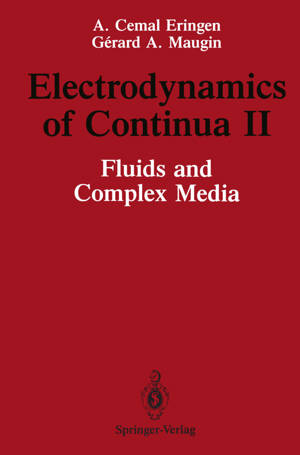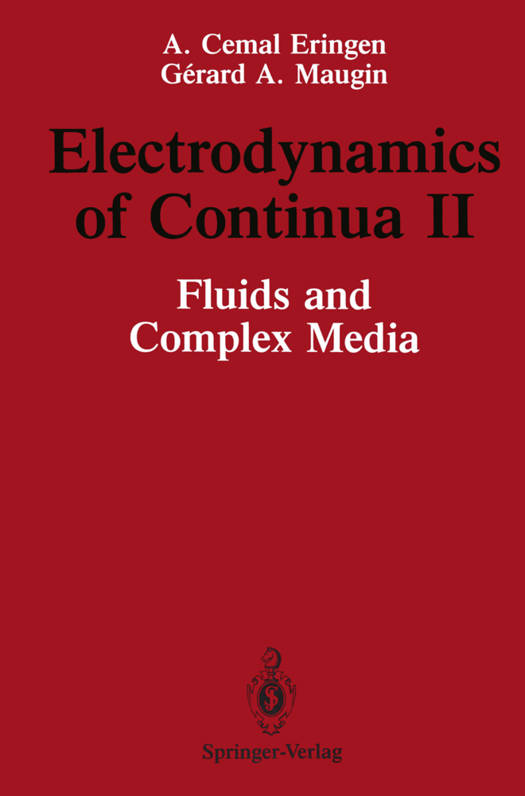
- Afhalen na 1 uur in een winkel met voorraad
- Gratis thuislevering in België vanaf € 30
- Ruim aanbod met 7 miljoen producten
- Afhalen na 1 uur in een winkel met voorraad
- Gratis thuislevering in België vanaf € 30
- Ruim aanbod met 7 miljoen producten
Zoeken
Electrodynamics of Continua II
Fluids and Complex Media
A Cemal Eringen, Gerard A Maugin
Paperback | Engels
€ 139,95
+ 279 punten
Omschrijving
This is the second volume of a two-volume set presenting a unified approach to the electrodynamics of continua, based on the principles of contemporary continuum of physics. The first volume was devoted mainly to the development of the theory and applications to deformable solid media. This volume extends the developments of the first volume to richer and newer grounds. It contains discussions on fluid media, magnetohydrodynamics, eletrohydrodynamics and media with more complicated structures. With the discussion, in the last two chapters, of memory-dependent materials and non-local E-M theory, the authors account for the nonlocal effects arising from motions and fields of material points at past times and at spatially distant points. This discussion is included here to stimulate further research in these important fields, which are presently in development stages. The second volume is self-contained and can be studied without the help of volume I. A section summarizing the constitutive equations and the underlying physical ideas, which were presented in more detail in the first volume, is included. This volume may be used as a basis for several graduate courses in engineering schools, applied mathematics and physics departments. It also contains fresh ideas and will stimulate further research in the directions the authors outline.
Specificaties
Betrokkenen
- Auteur(s):
- Uitgeverij:
Inhoud
- Aantal bladzijden:
- 363
- Taal:
- Engels
Eigenschappen
- Productcode (EAN):
- 9781461279280
- Verschijningsdatum:
- 17/09/2011
- Uitvoering:
- Paperback
- Formaat:
- Trade paperback (VS)
- Afmetingen:
- 156 mm x 234 mm
- Gewicht:
- 530 g

Alleen bij Standaard Boekhandel
+ 279 punten op je klantenkaart van Standaard Boekhandel
Beoordelingen
We publiceren alleen reviews die voldoen aan de voorwaarden voor reviews. Bekijk onze voorwaarden voor reviews.











